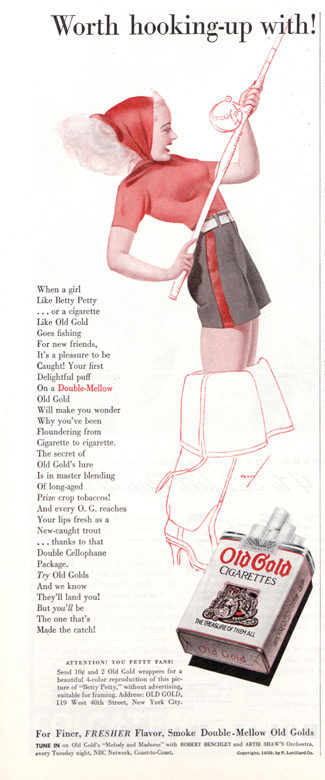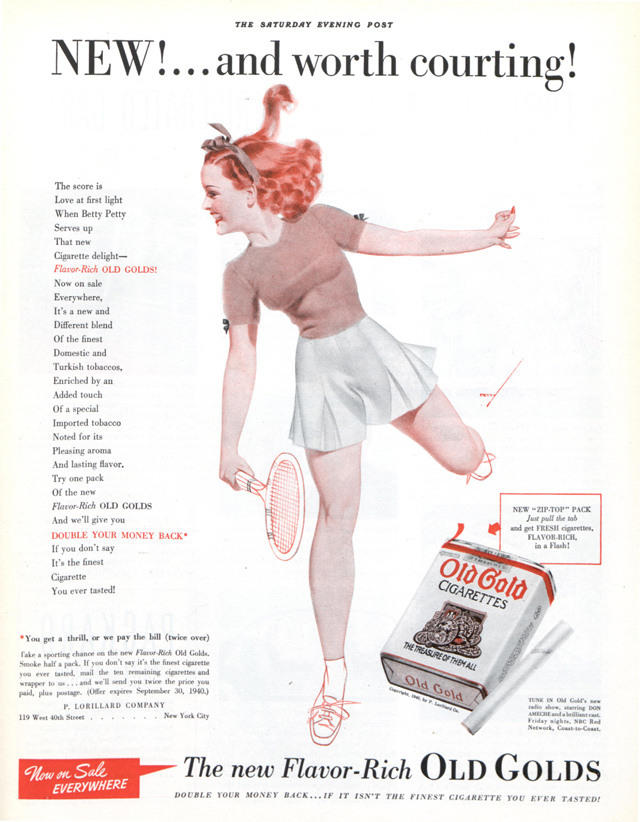Vintage Ads: Selling Cigarettes with Sex
Sex sells. Desirable women, rugged men, and suggestive slogans have all been a part of advertising for more than a century. This collection of vintage cigarette ads reveals some of the ways tobacco companies used sexual themes and risqué imagery to sell cigarettes.
The tobacco industry began using such tactics in the 1880s when they began printing pictures of women in costumes on the piece of cardstock used to hold the shape of the cigarette pack — a precursor to baseball cards.

Duke, Sons & Co. was the leading cigarette brand in the 1880s and early 1900s. The cardstock images they included in their packages became collectors’ items.


Headlines in tobacco ads were often double entendres, inviting readers to decide whether they were talking about their product or the person pictured in the ad.



Tobacco companies often chose attractive women to star in their ads to attract the male audience. Although sexual references primarily targeted men, they also lured women.

According to studies done in 2007 by Stanford Research into the Impact of Tobacco Advertising (SRITA), women were manipulated to believe that if they smoked cigarettes, they would be sexier and more attractive to men.

SRITA also found that if tobacco companies used slim women with fashionable clothes, women would be enticed to smoke.

Research shows that sexual imagery tends to grab consumers’ attention more quickly than a non-sexual ad and holds their attention longer. A study done by the University of Georgia (UGA) concluded that sex really does sell.

A UGA researcher explains that “people succumb to the ‘buy this, get this’ imagery used in ads.” They subconsciously believe that buying the product will make them as attractive as the people portrayed in the ads.
So what exactly were tobacco companies selling? An image, a fantasy, sex. And maybe a cigarette or two.